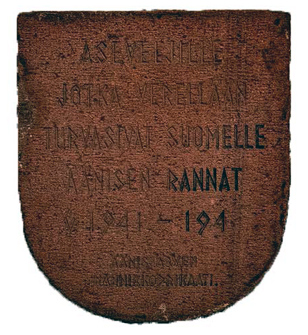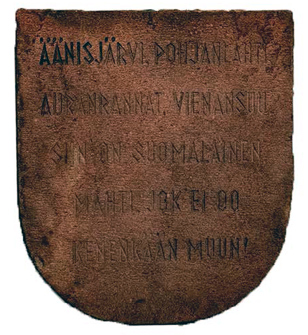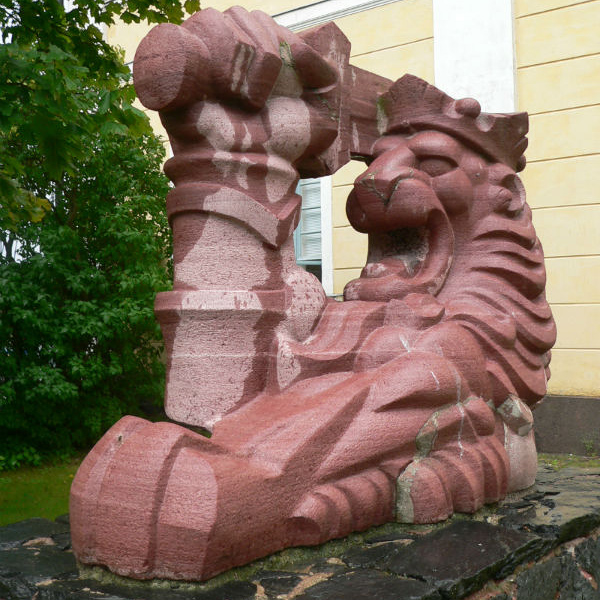Lion of Finland
|
 |
 |
|
To the brothers-in-arms,
who with their blood defended for Finland the shores of Onego Lake in 1941 – 194_ |
Lake Onega, Gulf of Bothnia,
Aura's shores, the mouth of White Sea – therein lies, the Finn, a power that no one else has! |
|
Onega coastal
defense Brigade. |
From the patriotic verse "Power of Finland" written by August Ahlqvist in 1860.
|
The site for the Lion of Finland was chosen on a high hill on the southern edge of Äänislinna, on the slope of which the Murmansk railway runs. However, the monument was not erected when the work was completed, because the commander of the VII Army Corps, Jäger Lieutenant-General Woldemar Hägglund, ordered that the memorial be delayed until peace has been effected.
In June 1944, the sculpture and stone plates were evacuated during the retreat by one of the last trains leaving from Äänislinna railway station.
In 1947, the Lion of Finland got a home in Suomenlinna, in the courtyard of the Naval Academy. The plates were used as a base for the statue.
In the spring of 1994, the stone plates were removed from under the sculpture. Later they were installed in the main building of the Naval Academy.
